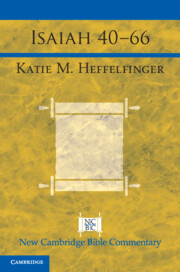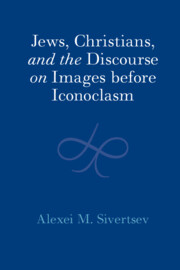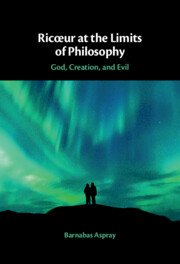57 results
3 - Sustainable Development and the Paradox of Legal Universalism
- from Part II - Universal, Pluriversal, and in Between
-
- Book:
- Sustainable Development, International Law, and a Turn to African Legal Cosmologies
- Published online:
- 16 May 2024
- Print publication:
- 23 May 2024, pp 107-144
-
- Chapter
- Export citation

Isaiah 40–66
-
- Published online:
- 04 May 2024
- Print publication:
- 09 May 2024
On the virtues of neutrality
-
- Journal:
- Religious Studies , First View
- Published online by Cambridge University Press:
- 26 March 2024, pp. 1-7
-
- Article
- Export citation
1 - Rousseau’s Sovereignty and the Concept of Constitutional Identity
- from Part I - Foundations, Theory, and Concepts
-
-
- Book:
- Deciphering the Genome of Constitutionalism
- Published online:
- 14 March 2024
- Print publication:
- 21 March 2024, pp 23-33
-
- Chapter
-
- You have access
- HTML
- Export citation
25 - Contrariness and Contradiction in Constitutional Law
- from Part IV - Emerging Trends
-
-
- Book:
- Deciphering the Genome of Constitutionalism
- Published online:
- 14 March 2024
- Print publication:
- 21 March 2024, pp 330-344
-
- Chapter
- Export citation
D - Strategist Should Enact Stratagems and Formlessness
-
- Book:
- Three Faces of Sun Tzu
- Published online:
- 07 March 2024
- Print publication:
- 15 February 2024, pp 235-297
-
- Chapter
- Export citation
D - Strategist Should Enact Stratagems and Formlessness
-
- Book:
- Three Faces of Sun Tzu
- Published online:
- 07 March 2024
- Print publication:
- 15 February 2024, pp 235-297
-
- Chapter
- Export citation
3 - Buridan on Paradox
-
-
- Book:
- Interpreting Buridan
- Published online:
- 01 February 2024
- Print publication:
- 08 February 2024, pp 37-50
-
- Chapter
- Export citation

Jews, Christians, and the Discourse on Images before Iconoclasm
-
- Published online:
- 01 February 2024
- Print publication:
- 08 February 2024
3 - Redefining Lexical Semantics and Pragmatics
-
- Book:
- Linguistic Knowledge and Language Use
- Published online:
- 19 October 2023
- Print publication:
- 02 November 2023, pp 66-116
-
- Chapter
- Export citation
3 - Monteverdi’s Contradictory Kisses
-
- Book:
- Monteverdi and the Marvellous
- Published online:
- 10 October 2023
- Print publication:
- 28 September 2023, pp 81-133
-
- Chapter
- Export citation
Chapter 14 - Paradoxes of Childhood and Play in Heraclitus and Plato
- from Part IV - Projects, Paradoxes, and Literary Registers in the Laws
-
- Book:
- How Plato Writes
- Published online:
- 27 July 2023
- Print publication:
- 17 August 2023, pp 275-289
-
- Chapter
- Export citation
Chapter 12 - Injury, Injustice, and the Involuntary in the Laws
- from Part IV - Projects, Paradoxes, and Literary Registers in the Laws
-
- Book:
- How Plato Writes
- Published online:
- 27 July 2023
- Print publication:
- 17 August 2023, pp 240-250
-
- Chapter
- Export citation

How Plato Writes
- Perspectives and Problems
-
- Published online:
- 27 July 2023
- Print publication:
- 17 August 2023

Dante and the Practice of Humility
- A Theological Commentary on the Divine Comedy
-
- Published online:
- 29 June 2023
- Print publication:
- 13 July 2023
Chapter 5 - Logical Contradiction and Real Opposition
-
- Book:
- Hegel's Logic and Metaphysics
- Published online:
- 26 April 2023
- Print publication:
- 26 January 2023, pp 166-201
-
- Chapter
- Export citation
Intransitive preferences or choice errors? A reply to Birnbaum
-
- Journal:
- Judgment and Decision Making / Volume 15 / Issue 6 / November 2020
- Published online by Cambridge University Press:
- 01 January 2023, pp. 1052-1053
-
- Article
-
- You have access
- Open access
- HTML
- Export citation
Bullshit for you; transcendence for me. A commentary on “On the reception and detection of pseudo-profound bullshit”
-
- Journal:
- Judgment and Decision Making / Volume 11 / Issue 1 / January 2016
- Published online by Cambridge University Press:
- 01 January 2023, pp. 121-122
-
- Article
-
- You have access
- Open access
- HTML
- Export citation
Chapter 7 - Heidegger, Being, and All That Is and Is So
- from Part III - Paradox, the Prospects for Ontology, and Beyond
-
-
- Book:
- Heidegger on Logic
- Published online:
- 15 September 2022
- Print publication:
- 22 September 2022, pp 133-158
-
- Chapter
- Export citation

Ricœur at the Limits of Philosophy
- God, Creation, and Evil
-
- Published online:
- 18 August 2022
- Print publication:
- 25 August 2022



